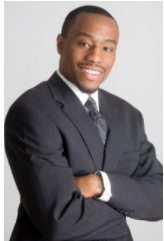Meymey Seng
Staff Writer
On Wednesday, January 3rd, it was freezing.
When students teachers returned from the winter break on that day, heating systems at the school were not functioning normally, causing some classrooms to be very cold, and others sweltering. Some rooms were cold enough for the class to be temporarily moved into another room where the heat was working.
”When I came into my classroom on the day after break, it was frigid,” said Ms. Jonas. Usually I have a higher tolerance for cold than students, but this time I felt it so I knew it wasn’t going to be a good learning environment.”
On top of that situation, a few inches of snowfall were predicted in Philadelphia for that day. Even though the exact totals were uncertain, knowing the School District, SLA and other buildings had a good chance of being closed.
And so, right after eleven days of winter break, there was school for one day. After the predicted amount of three to five inches of snow, the district closed all schools for another two days, basically adding an extension of the break.
The snow days backtracked teachers with their planned lessons and scuttled several benchmark projects, which some teachers resented. However, it also gave them more time to grade work and obviously be able to have a break.
“If there’s more days off, it’s hard for people to build momentum and get projects going, so it kind of makes things stop a little bit,” said Co-Principal Aaron Gerwer.
“The good thing is we do so much online maybe we can try to make up for it that way.”
Since the snow days happened during benchmark season, teachers tried to help the students understand what they missed by adding in little lessons.
“It created a lot of stress and pressure on both ends,” said Spanish Teacher Joselyn Hernandez. “Although, it was kind of a cool situation coming back from break, it was a way to ease us going back into work.”
History Teacher Pearl Jonas agreed.
“I’m pro-snow day all the time, I think we all need breaks, students and teachers, so whenever we can get them is good.”
Upon returning from break, the building still had uneven heat in classrooms and hallways.
To address this issue, contractors came to do a full diagnosis of the building. Although, that is not able to be done with students in the building, it was completed the following weekend, and heating conditions have improved, although there is still a difference from room to room.



